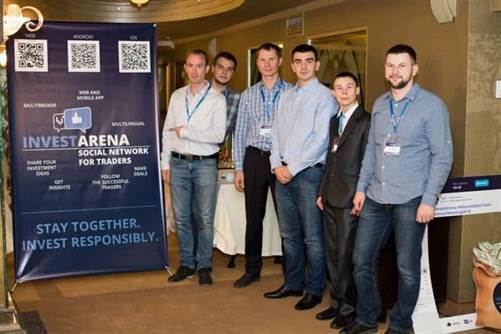Content
Malfunctions can cause safety hazards, waste employee time and cause delays in production that can impact customers. As edge computing allows IoT data to be processed and acted upon more quickly than cloud computing, failing machinery could be identified and turned off more immediately, potentially saving the entire manufacturing floor from irreversible disruptions. Edge computing has not yet come into the mainstream for businesses, but there are a number of use cases where it’s already making an impact. Below I’ve provided background definition edge computing on how three companies, Dropbox, Nest and GE, are integrating edge into their products to provide improved experiences for their customers. I’ve also included some broader use cases for how companies can begin to adopt and digitally transform their business with edge computing. A cellphone, for example, while powerful compared to what was produced decades ago, still pales in comparison to even a mid-range laptop when it comes to power. The capabilities of a data center can further dwarf the potential of the majority of edge devices.

Rugged edge computers are hardened to withstand exposure to challenging environmental conditions that are commonly found in vehicles. Such challenging conditions include exposure to shock, vibration, dust, and extreme temperatures. Latency.Latency is the time needed to send data between two points on a network.
Edge Computing Implementation
An example of this is the use of edge computing devices in rescue initiatives. Here, a rescue robot serves as the edge computing device, and it can be tasked with moving autonomously and collecting visual data in hard-to-reach areas.
The California-based company pairs AI with edge processing to support vision systems for autonomous vehicles. Hewlett Packard Enterprise said in 2018 that it would invest $4B in edge computing over the next 4 years. HPE’s Edgeline Converged Edge Systems is targeted at industrial partners that desire data center-level computing power while often operating in remote conditions. But centralized cloud computing is not ideal for all applications and use cases. Edge computing provides solutions where traditional cloud infrastructure may fall short. From wearables to connected kitchen appliances, internet-connected devices are everywhere. As a result, cloud computing — the process by which many of these smart devices connect to the internet to operate — has become an increasingly dominant trend.
- Rugged edge computers are used to monitor the performance and control the oil production process.
- If you process data near where it is generated, you don’t have to wait for it to go up to the cloud and back again.
- Still other examples are often aligned with utilities, such as water treatment or electricity generation, to ensure that equipment is functioning properly and to maintain the quality of output.
In this way, you can prevent the east-west movement of threats once they are detected. With FortiNAC’s automation policies, you can custom-design how you respond to different types of threats, enabling you to maintain a more secure network without compromising uptime. Computing was originally done using one large, centralized computer that often took up an entire room or section of a building. People would either travel from their offices to use the computer or send punch cards with programs to the system’s operator, who would input them into the computer. Even so, as adoption picks up, there will be more opportunities for companies to test and deploy this technology across sectors. People have become increasingly comfortable wearing fitness trackers, glucose monitors, smartwatches, and other health-monitoring wearables. Following image (source — AWS) shows how to manage ML on Edge Computing using AWS infrastructure.
What Is Edge Computing And Why Does It Matter?
Thankfully, the driver’s vehicle is equipped with an Internet of Things virtual assistant that provides him with real-time navigation, geographical Pair programming information and even weather-related updates. By signing up, you agree to our Privacy Notice and European users agree to the data transfer policy.
In a typical closed control loop system, sensors act as the initial trigger point for sending events to the backend systems. For example, in a video camera, an optimal model is to send live streams only when there is motion. Capabilities such as motion detection and tripwire detection can eliminate the need to send continuous traffic to the cloud for processing until a motion is detected. In most cases, the edge computing capacity is minimal and is used for a very targeted feature integrated into the product. But to do this, organizations need edge computing systems that deliver powerful, distributed compute, secure and simple remote management, and compatibility with industry-leading technologies.
What Is Edge Computing? Your Complete Guide
Although algorithms like YOLO_v2 have sped up the process of object detection the latency is at that part of the system when the car has to send terabytes to the central server and then receive the response and then act! Hence, we need the basic processing like when to stop or decelerate, to be done in the car itself. The interconnectivity of the cloud enabled a more thorough approach to capturing and analyzing data. This enables a much faster customer turnaround with lesser chances of getting into a bottleneck at the counter. Transmitting and processing massive quantities of raw data puts a significant load on the network’s bandwidth.
DevOps transformation: Taking edge computing and continuous updates to space – TechCrunch
DevOps transformation: Taking edge computing and continuous updates to space.
Posted: Tue, 16 Nov 2021 08:00:00 GMT [source]
Moving data processing and analysis to the edge helps speed system response, enabling faster transactions and better experiences that could be vital in near real-time applications, like autonomous vehicle operation. Edge computing helps you unlock the potential of the vast untapped data that’s created by connected devices. You can uncover new business opportunities, increase operational efficiency and provide faster, more reliable and consistent experiences for your customers. The best edge computing models can help you accelerate performance by analyzing data locally. A well-considered approach to edge computing can keep workloads up-to-date according to predefined policies, can help maintain privacy, and will adhere to data residency laws and regulations. Edge environments that support primary infrastructure are created through a network of data centers scattered across a nation or the globe.
Network Connectivity
In addition, the number of traversed nodes is reduced, further decreasing delays. Moreover, edge computing is of major interest from a network operation point-of-view. Reduced communications over long distances and into the core network lead to decreasing overall load. Meanwhile, edge computing avoids the use of dedicated hardware at the location of data generation by running virtualized functions on standard server hardware at the edge of the network. If you store and process all your data in one location, that gives attackers a big, attractive target, but edge computing makes it less likely that attackers will gain a huge trove of data. In addition, edge computing makes distributed denial of service attacks more difficult. For computing challenges faced by IT vendors and organizations, cloud computing remains a viable solution.
In traditional enterprise computing, data is produced at a client endpoint, such as a user’s computer. That data is moved across a WAN such as the internet, through the corporate LAN, where the data is stored and worked upon by an enterprise application. This remains a proven and time-tested approach to client-server computing for most typical business applications. Many environments, even today, have limited, unreliable or unpredictable connectivity.

Despite the many challenges faced by Cloud Computing, there aremany benefits of the cloudas well. A business restricted to a single geographic location is now a thing of the past. Cloud computing has become a fundamental requirement for most organizations. We have all the tools and downloadable guides you need to do your job faster and better – and it’s all free. Whether you’re a beginner looking to define an industry term or an expert seeking strategic advice, there’s an article for everyone. FortiNAC also gives you the ability to automate how your system responds to threats.
Some examples include retail environments where video surveillance of the showroom floor might be combined with actual sales data to determine the most desirable product configuration or consumer demand. Other examples involve predictive analytics that can guide equipment maintenance and repair before actual defects or failures occur. Still other examples are often aligned with utilities, such as water treatment or electricity generation, to ensure that equipment is functioning properly and to maintain the quality of output. Take a comprehensive look at what edge computing is, how it works, the influence of the cloud, edge use cases, tradeoffs and implementation considerations. A four-day conference for IT business leaders, cloud operators and developers covering the open infrastructure landscape..Look for edge-related tracks and sessions at upcoming Summits.
But cars also represent a full shift away from user responsibility for the software they run on their devices. Google also is getting smarter at combining local AI features for the purpose of privacy and bandwidth savings. For instance, Google Clips keeps all your data local by default and does its magical AI inference locally. It doesn’t work very well at its stated purpose of capturing cool moments from your life. Think of how much pain and suffering consumers have experienced with poorly managed Internet of Things devices.
Transferring large quantities of data in real-time in a cost-effective way can be a challenge, primarily when conducted from remote industrial sites. This problem is remedied by adding intelligence to devices present at the edge of the network.
There’s no need to transmit that kind of data to the cloud or a distant corporate data center. IoT and edge computing devices collect data and manage it in one of two main ways.
Startups such as Advertima, which raised a $17.5M Series A round in 2020, are developing technologies that leverage AI and machine vision to give retailers even more insights into the decisions consumers make in retail environments. While broadband access, an essential for edge and cloud computing, in rural areas remains a challenge, one area where edge computing can be utilized efficiently is vertical farming, which is the process of growing food and plants in vertically-stacked layers. Since produce is grown in an artificially-controlled environment, local processing of data allows for maintenance of optimal conditions. Some wearable health monitors can locally analyze pulse data or sleep patterns without connecting to the cloud. Doctors can then evaluate patients on the spot and provide on-demand feedback about their health.
Digi offers edge computing solutions meet the needs of both groups of users. Additionally, edge computing functionality supports management of failure detection and predictive maintenance. Predicting when a machine or component will fail allows factory operators to perform maintenance or replace a part before a failure occurs, saving costs from lost productivity. Intelligent lighting controls use edge computing devices to control individual lights or groups of lights to maximize efficiency while ensuring safety in public spaces. The growth of the Internet of Things has produced a corresponding growth in the volume of data collected at the network edge.
